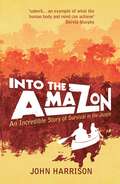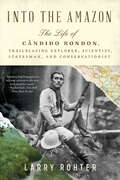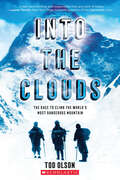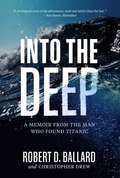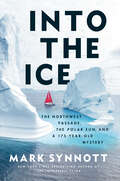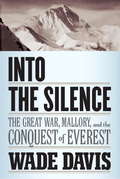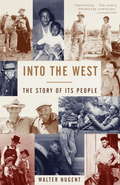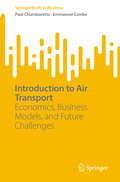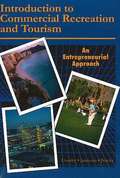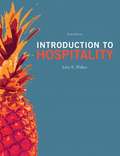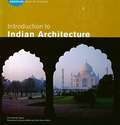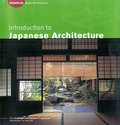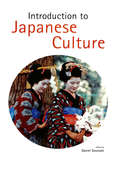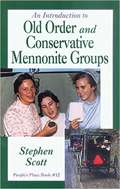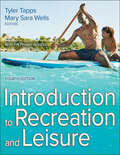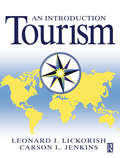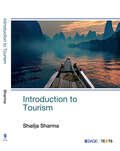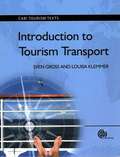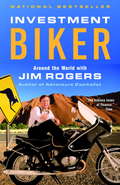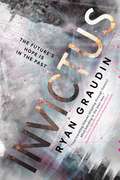- Table View
- List View
Into the Amazon: An Incredible Story of Survival in the Jungle
by John HarrisonIn 1950, a young French explorer entered deep jungle in Brazil and was never seen again. Inspired by that explorer's diary, John and Heather Harrison paddled their canoe into some of the remotest parts of the Amazon. This is the incredible story of their struggle to keep their sanity and marriage intact in one of the most hostile places on earth.
Into the Amazon: The Life Of Candido Rondon, Trailblazing Explorer, Scientist, Statesman, And Conservationist
by Larry Rohter“Rohter’s crisp biography is a welcome addition to the new, more inclusive canon.” —Rachel Slade, New York Times Book Review A thrilling biography of the Indigenous Brazilian explorer, scientist, stateseman, and conservationist who guided Theodore Roosevelt on his journey down the River of Doubt. Cândido Rondon is by any measure the greatest tropical explorer in history. Between 1890 and 1930, he navigated scores of previously unmapped rivers, traversed untrodden mountain ranges, and hacked his way through jungles so inhospitable that even native peoples had avoided them—and led Theodore Roosevelt and his son, Kermit, on their celebrated “River of Doubt” journey in 1913–14. Upon leaving the Brazilian Army in 1930 with the rank of a two-star general, Rondon, himself of indigenous descent, devoted the remainder of his life to not only writing about the region’s flora and fauna, but also advocating for the peoples who inhabited the rainforest and lobbying for the creation of a system of national parks. Despite his many achievements—which include laying down a 1,200-mile telegraph line through the heart of the Amazon and three nominations for the Nobel Peace Prize—Rondon has never received his due. Originally published in Brazil, Into the Amazon is the first comprehensive biography of his life and remarkable career.
Into the Clouds (Scholastic Focus): The Race To Climb The World's Most Dangerous Mountain
by Tod OlsonA nail-biting tale of survival and brotherhood atop one of the world's most dangerous mountains.This fast-paced, three-part narrative takes readers on three expeditions over 15 years to K2, one of the deadliest mountains on Earth. Roped together, these teams of men face perilously high altitudes and battering storms in hopes of reaching the summit. As each expedition sets out, they carve new paths along icy slopes and unforgiving rock, creating camps on ledges so narrow they fear turning over in their sleep.But disaster strikes -- in 1939, four men never make it down the mountain. Fourteen years later, a man develops blood clots in his legs at 25,000 feet, leaving his team with no safe path off the mountain. Filled with displays of incredible strength and heart-stopping danger, Into the Clouds tells the incredible stories of the men whose quest to conquer a mountain became a battle to survive the descent.
Into the Deep: A Memoir From the Man Who Found Titanic
by Robert D. BallardThe legendary explorer of Titanic and Lusitania reveals the secret military missions behind his famous exploits and unveils a major new discovery on the occasion of the 35th anniversary of the Titanic find. Best known for finding the wreck of the Titanic, celebrated adventurer Robert Ballard has a lifetime of stories about exploring the ocean depths. From discovering new extremophile life-forms thriving at 750°F hydrothermal vents in 1977 to finding famous shipwrecks including the Bismarck and PT 109, Ballard has made history. Now the captain of E/V Nautilus, a state-of-the-art scientific exploration vessel rigged for research in oceanography, geology, biology, and archaeology, he leads young scientists as they map the ocean floor, collect artifacts from ancient shipwrecks, and relay live-time adventures from remote-controlled submersibles to reveal amazing sea life. Now, for the first time, Robert Ballard gets personal, telling the inside stories of his adventures and challenges as a midwestern kid with dyslexia who became an internationally renowned ocean explorer. Here is the definitive story of the danger and discovery, conflict and triumph that make up his remarkable life.
Into the Great White Sands
by Craig VarjabedianPhotographic masterpiece on beloved White Sands National Park; now in paperback. Winner of the New Mexico-Arizona Book Award for Photography. Like Ansel Adams in a contemporary and pristine setting. Powerfully relevant today.Award-winning photographer Craig Varjabedian has spent decades photographing the many moods of the magnificent and ever-changing landscape of New Mexico&’s White Sands National Monument. His photographs reveal snow-white dunes of gypsum, striking landforms, storms and stillness, panoramic vistas and breathtaking sunsets, intricate wind-blown patterns in the sand, ancient animal tracks, exquisite desert plants, and also the people who come to experience this place that is at once spectacular yet subtle. Varjabedian&’s evocative color images provide the reader with an almost palpable sense of this extraordinary place.These photographs are enriched by several essays written by Jeanetta Calhoun Mish, noted poet and author; Dennis Ditmanson, retired White Sands National Monument superintendent; Jim Eckles, retired Missile Range public affairs officer; and Craig Varjabedian, the photographer who shares his insights and experiences of photographing this inspiring landscape and offers tips on making better pictures of White Sands.
Into the Ice: The Northwest Passage, the Polar Sun, and a 175-Year-Old Mystery
by Mark SynnottNew York Times bestselling author Mark Synnott has climbed with Alex Honnold. He&’s scaled Mount Everest. He's pioneered big-wall first ascents, including the north-west face of the mile-high Great Trango Tower, and skied monster first descents. But in 2022, he realized there was a dream he&’d yet to achieve: to sail the Northwest Passage in his own boat-- a feat only four hundred or so sailors have ever accomplished—and in doing so, try to solve the mystery of what happened to legendary nineteenth-century explorer Sir John Franklin and his ships, HMS Erebus and Terror. Only a few hundred vessels have ever transited the Northwest Passage, and substantially fewer have done so in a fiberglass-hulled boat like Polar Sun. But Mark was determined to return to the Arctic, where he cut his teeth as a young climber, and in the process investigate one of the great mysteries of exploration: What really happened to Sir John Franklin and his entire 128-man crew, which disappeared into these ice-strewn waters 175 years ago? In this pulse-pounding travelogue, Mark Synnott paints a vivid portrait of the Arctic, which is currently warming twice as fast as any other part of our planet. He weaves its history and people into the first-person account of his epic journey through the Northwest Passage, searching for Franklin's tomb along the way-- all while trying to avoid a similar fate. In Into the Ice, Mark and his crew race against time and treacherous storms in search of answers to the greatest mystery of all time: What is it that drives someone to risk it all in the name of exploration?
Into the Silence: The Great War, Mallory and the Conquest of Everest
by Wade DavisOn June 6, 1924, two men set out from a camp perched at 23,000 feet on an ice ledge just below the lip of Mount Everest's North Col. George Mallory, thirty-seven, was Britain's finest climber. Sandy Irvine was a young Oxford scholar of twenty-two with little previous mountaineering experience. Neither of them returned. In this magisterial work of history and adventure, based on more than a decade of prodigious research in British, Canadian, and European archives, and months in the field in Nepal and Tibet, Wade Davis vividly re-creates British climbers' epic attempts to scale Mount Everest in the early 1920s. With new access to letters and diaries, Davis recounts the heroic efforts of George Mallory and his fellow climbers to conquer the mountain in the face of treacherous terrain and furious weather. Into the Silence sets their remarkable achievements in sweeping historical context: Davis shows how the exploration originated in nineteenth-century imperial ambitions, and he takes us far beyond the Himalayas to the trenches of World War I, where Mallory and his generation found themselves and their world utterly shattered. In the wake of the war that destroyed all notions of honor and decency, the Everest expeditions, led by these scions of Britain's elite, emerged as a symbol of national redemption and hope. Beautifully written and rich with detail, Into the Silence is a classic account of exploration and endurance, and a timeless portrait of an extraordinary generation of adventurers, soldiers, and mountaineers the likes of which we will never see again.From the Hardcover edition.
Into the West: The Story of Its People
by Walter NugentPaleo-Indians, Spanish conquistadors and settlers, gold rushers, and aspiring movie stars and computer moguls are among the people Nugent (history, U. of Notre Dame) profiles in his historic sweep of the US west. He explains such matters as how California became the most urban, most populous, and most ethnically diverse state in the country; why African Americans in the early 1900s thought Oakland and Denver more tolerant than San Francisco or Los Angeles; and what happened to the second generation of Mormons after the big migrations of the 1840s. Annotation c. Book News, Inc. , Portland, OR (booknews. com)
Introduction to Aegean Art
by Philip P. BetancourtThis textbook is a compilation of the author's more than 35 years of teaching and excavation experience in the field of Aegean Bronze Age art history and archaeology. It is geared toward an audience of undergraduate and graduate students as an introduction to the Bronze Age art objects and architecture that have been uncovered on Crete, the Greek peninsula, and the Cycladic Islands.
Introduction to Air Transport: Economics, Business Models, and Future Challenges (SpringerBriefs in Business)
by Paul Chiambaretto Emmanuel CombeThis book highlights the economic, systemic, and forward-looking dimensions of air transport, offering a comprehensive and accessible introduction to the functioning, evolution, and future challenges of the global airline industry. Its main strength lies in its ability to address a wide and diverse audience. Structured around five chapters, the book examines the historical development of aviation, the complexity of the air transport ecosystem, airline business model dynamics, competitive strategies, and future challenges such as climate change, evolving passenger behavior, and geopolitical issues. Combining academic rigor with clarity, it fills a gap in the literature by providing an up-to-date and multidisciplinary perspective. It raises timely questions about the sustainability of current airline business models and offers insights into the technological, regulatory, and societal transformations shaping the future of aviation. The original French edition was appreciated not only by students but also by aviation professionals (pilots, cabin crew, managers), consultants, lawyers, and public decision-makers seeking a concise and structured understanding of the air transport sector&’s key issues.
Introduction to Commercial Recreation and Tourism: An Entrepreneurial Approach (5th edition)
by John C. Crossley Lynn M. Jamieson Russell E. BrayleyIntroduction to Commercial Recreation and Tourism is a stepping stone to understanding the scope, characteristics, entrepreneurial strategies and management aspects of commercial recreation and tourism. Topics include the history of commercial recreation, definitions, economic applications, business start-up strategies, financing, marketing, operations management, and global trends. This edition also examines industry profiles for the travel, hospitality, and local commercial recreation industries. The Journal of Park and Recreation Administration viewed the past edition as a 'valuable addition to commercial recreation literature'.
Introduction to Hospitality (6th edition)
by John R. WalkerThe Sixth Edition of Introduction to Hospitality focuses on hospitality operations while offering a broad, comprehensive foundation of current knowledge about the world's largest industry. The text is organized into five sections: the hospitality industry and tourism; lodging; restaurants, managed services, and beverages; recreation, theme parks, clubs, and gaming entertainment; and assemblies and event management.
Introduction to Indian Architecture
by Bindia Thapar Surat Kumar Manto Suparna BhallaTake a journey through Indian architecture from the dawn of civilization to the present with this colorful, attractive survey.The architecture of India reflects both the cultural diversity of the subcontinent and its rich political and historical inheritance. In this guide, the various strands of this rich architectural history, from the dawn of civilization to modern times, are beautifully presented in word and picture. Readers are taken on a fascinating tour of Indus Valley civilization, early Vedic traditions, Hindu, Jain, Mughal, regional, colonial and post-independence architectural styles. Themes such as water architecture and the architecture of science also figure prominently, giving many westerners their first glimpse of these styles.The informative text, complemented by 400 photographs, watercolors, maps and plans, provide compelling evidence of India's influence on building design throughout history.
Introduction to Japanese Architecture
by David Young Michiko Young Tan Hong YewIntroduction to Japanese Architecture provides an overview of Japanese architecture in its historical and cultural context. It begins with a discussion of prehistoric dwellings and concludes with a description of contemporary trends in areas as diverse as country inns, underground malls, and love hotels. The intervening 12,000 years are analyzed in reference to major changes in architecture caused by Buddhist and indigenous influences, feudalism, and finally the influence of Western culture in the 19th century.
Introduction to Japanese Culture
by Daniel SosnoskiIts literature, music, art and cuisine embody the richness of Japan's renowned culture. Preserved for centuries in its highly independent and utterly unique rituals, festivals, and ethics, Japanese culture may now seem utterly Westernized--yet much of it will seem mysterious to Westerners. Introduction to Japanese Culture presents an overview, through sixty-eight original and informative essays, of some of Japan's most notable cultural achievements. From the anything-but-prosaic box lunch to the inscrutable Noh plays, these cogent essays, complemented with photographs and illustrations, reveal the tenacious cultural past still resonant in Japan's arts, festivals, and customs. They focus on the essential constants that remain in present day Japan and their counterparts in Western culture. A fascinating read.
Introduction to Japanese Culture
by Daniel SosnoskiThe richness of Japan's history is renowned worldwide. The heritage of culture that its society has produced and passed on to future generations is one of Japan's greatest accomplishments. In Introduction to Japanese Culture, you'll read an overview, through sixty-eight original and informative essays, of Japan's most notable cultural achievements, including:Religion, Zen Buddhism, arranged marriages and BushidoDrama and Art--from pottery, painting and calligraphy to haiku, kabuki and karateCuisine--everything from rice to raw fishHome and Recreation, from board games such as Go to origami, kimonos and Japanese gardensThe Japan of today is a fully modern, Westernized society in nearly every regard. Even so, the elements of an earlier age are clearly visible in the country's arts, festivals, and customs. This book focuses on the essential constants that remain in present-day Japan and their counterparts in Western culture.Edited by Daniel Sosnoski, these well-researched articles, color photographs, and line illustrations provide a compact guide to aspects of Japan that often puzzle the outside observer. Introduction to Japanese Culture is wonderfully informative, a needed primer on the cultural make-up and behaviors of the Japanese.
Introduction to Japanese Culture
by Daniel SosnoskiFeaturing full-color photographs and illustrations throughout this text is a comprehensive guide to Japanese culture.The richness of Japan's history is renowned worldwide. The heritage of culture that its society has produced and passed on to future generations is one of Japan's greatest accomplishments. In Introduction to Japanese Culture, you'll read an overview, through sixty-eight original and informative essays, of Japan's most notable cultural achievements, including:Religion, Zen Buddhism, arranged marriages and BushidoDrama and Art-from pottery, painting and calligraphy to haiku, kabuki and karateCuisine-everything from rice to raw fishHome and Recreation, from board games such as Go to origami, kimonos and Japanese gardensThe Japan of today is a fully modern, Westernized society in nearly every regard. Even so, the elements of an earlier age are clearly visible in the country's arts, festivals, and customs. This book focuses on the essential constants that remain in present-day Japan and their counterparts in Western culture.Edited by Daniel Sosnoski, these well-researched articles, color photographs, and line illustrations provide a compact guide to aspects of Japan that often puzzle the outside observer. Introduction to Japanese Culture is wonderfully informative, a needed primer on the cultural make-up and behaviors of the Japanese.
Introduction to Old Order and Conservative Mennonite Groups: People's Place Book No. 12 (People's Place Bks.)
by Stephen ScottThis book tells a story which until now has not been available in such an interesting and comprehensive form. What holds these people together? Why are they growing in number? Where do they live? The Old Order Mennonites are less well known than the Amish, but are similar in many beliefs and practices. Some Old Order Mennonites drive horses and buggies. Others use cars for transportation. Conservative Mennonite groups vary a great deal, but in general espouse strong faith and family life and believe that how they live should distinguish them from the larger society around them. The author details courtship and wedding practices, methods of worship, dress, transportation, and vocation. Never before has there been such an inside account of these people and their lives. The author spent years conferring and interviewing members of the various groups, trying to portray their history and their story in a fair and accurate manner. An enjoyable, educational, inspiring book.
Introduction to Recreation and Leisure
by Tyler Tapps and Mary Sara WellsIntroduction to Recreation and Leisure, Fourth Edition With HKPropel Access, presents a comprehensive view of the multifaceted, expansive field of recreation and leisure. This full-color text grounds students in the historical, philosophical, and social aspects of the industry. Community parks and recreation departments, nonprofit organizations, and commercial recreation and ecotourism enterprises are thoroughly explored. Students learn about various enriching educational programs and services for people of all ages.
Introduction to Tourism
by Leonard J Lickorish Carson L JenkinsAn Introduction to Tourism is the essential guide to the tourism industry. It provides a comprehensive and authoritative introduction to all facets of tourism including:the history of tourism; factors influencing the tourism industry; tourism in developing countries; sustainable tourism; forecasting future trends. Tourism has changed radically in recent years with the onset of many technological and economic changes and an ever increasing concern for the environment. This book provides a down-to-earth introduction to this complex and multi-faceted industry.This invaluable introduction is written for all students of tourism and all those involved in the industry who want to know more about the structure, component activities and environment within which they work.
Introduction to Tourism
by Shailja SharmaUsing situational case studies, vignettes on world-class destinations and wide-ranging examples,this book aims to create awareness and understanding on the functioning of the tourism industry. A stepping stone for everyone aspiring to make a career in the tourism and hospitality industry, this textbook builds a strong groundwork of basic concepts and explains theories and their applications in real-life situations. Using situational case studies, vignettes on world-class destinations and wide-ranging examples, Introduction to Tourism aims to create awareness and understanding among the readers on the functioning of the tourism industry. It offers insights into how countries devise their tourism marketing strategies and how to deal with situations while working with tourists and travellers. Each section of the book has been thematically designed and mapped with the curriculum of major universities for distinct learning outcomes. This book is meant to be a compact and constant companion for all students undergoing any kind of training in the tourism and hospitality industry to enhance their professional skills. Key Features: • Special focus on emerging trends and situations in the tourism sector, including the effect of COVID-19 on the industry and its functioning • Comprehensive coverage of the five A's of tourism industry citing latest examples and new evolving patterns • Each section aided by case studies with well-defined learning outcomes and discussion questions for classroom teaching • Each chapter facilitated with an opening vignette, learning objectives and chapter-end activities for self-assessment as well as group projects
Introduction to Tourism Transport
by Sven Gross Louisa KlemmerTransport is an inherent part of tourism; whether as a functional means of transportation, such as between origin and destination or within the destination; or as a key element of the holiday experience itself, as in cruising or traveling along scenic or historic routes. This book provides the necessary background information to gain a comprehensive understanding of transportation markets, with each of the three modes of transportation - air, ground and marine - explored in detail. Each section includes definitions, the historical development of the market and international institutional frameworks, with case studies, learning objectives and study questions incorporated to facilitate an active learning process. View the free online resources for this book.
Introduction to the UK Hospitality Industry: A Comparative Approach
by Bob Brotherton'An Introduction to the UK Hospitality Industry: a comparative approach' is a core text for introductory hospitality modules and courses. Unique in its structure; this text looks at key aspects and compares them with each sector of the industry to give students a broader and comprehensive view of the topic. Key aspects of the industry are discussed, including the following areas:* Management practices* Work patterns and employment practices* Industry and financial structures* IT applications* Customers and marketsWritten in a user friendly style, the following features have been incorporated:* Chapter objectives* Case studies* Review questions* Chapter conclusions* Further reading and bibliography.Contributors to this text are amongst the most highly acclaimed in the hospitality field and bring with them a wealth of knowledge.
Investment Biker
by Jim RogersLegendary investor Jim Rogers gives us his view of the world on a twenty-two-month, fifty-two-country motorcycle odyssey in his bestselling business/adventure book, Investment Biker, which has already sold more than 200,000 copies. Before you invest another dollar anywhere in the world (including the United States), read this book by the man Time magazine calls "the Indiana Jones of finance." Jim Rogers became a Wall Street legend when he co-founded the Quantum Fund. Investment Biker is the fascinating story of Rogers's global motorcycle journey/investing trip, with hardheaded advice on the current state and future direction of international economies that will guide and inspire investors interested in foreign markets.NOTE: This edition does not include a photo insert.
Invictus
by Ryan Graudin<p>A heart-stopping adventure that defies time and space--New York Times bestselling author Marie Lu calls it "an incredibly intricate, brilliantly paced, masterfully written journey." <p>Farway Gaius McCarthy was born outside of time. The son of a time traveler from 2354 AD and a gladiator living in ancient Rome, Far's very existence defies the laws of nature. All he's ever wanted was to explore history for himself, but after failing his entrance exam into the government program, Far will have to settle for a position on the black market-captaining a time-traveling crew to steal valuables from the past. <p>During a routine heist on the sinking Titanic, Far meets a mysterious girl named Eliot who always seems to be one step ahead of him. Eliot has secrets-big ones-that will affect Far's life from beginning to end. Armed with the knowledge that history is not as steady as it seems, she will lead Far and his team on a race through time to set things right before the clock runs out.</p>
